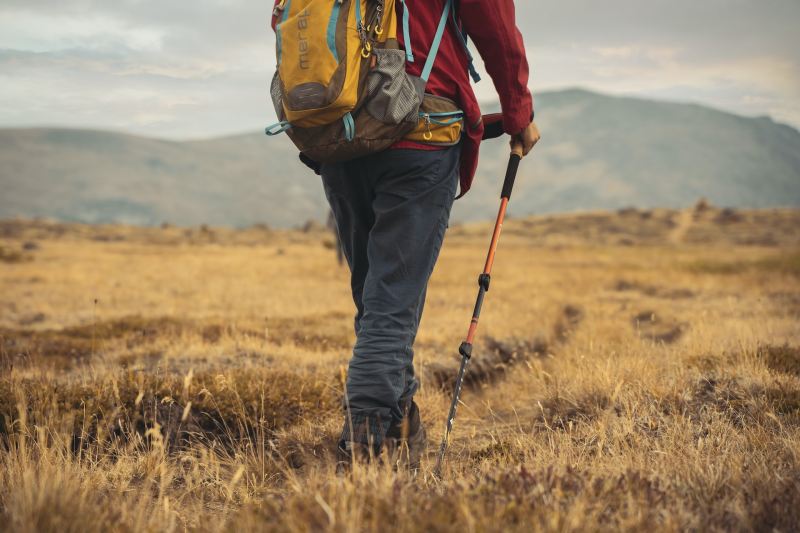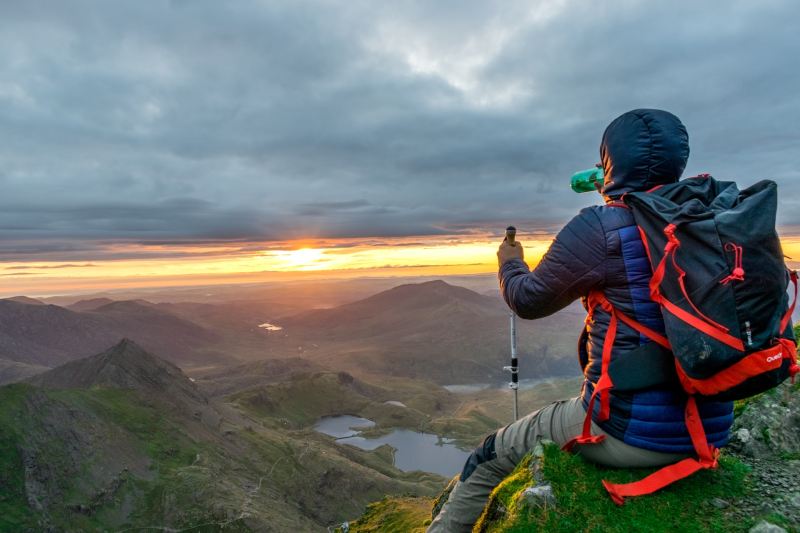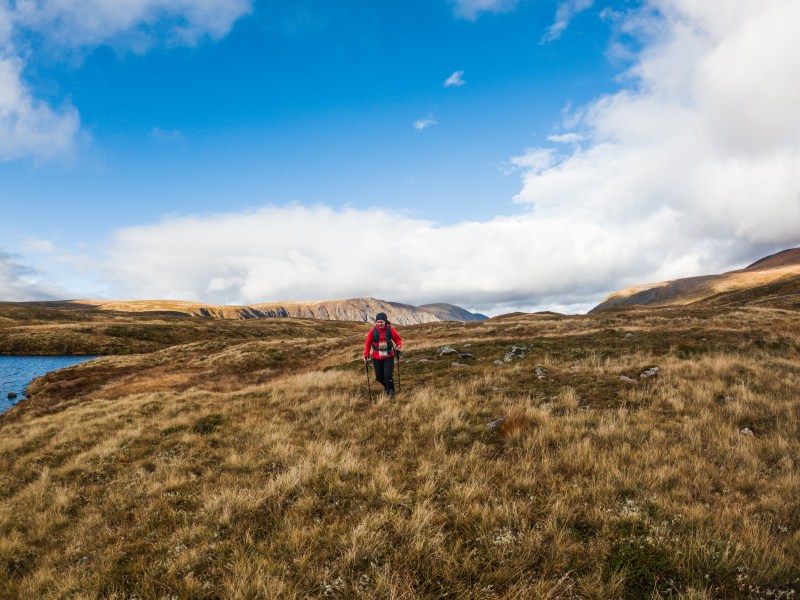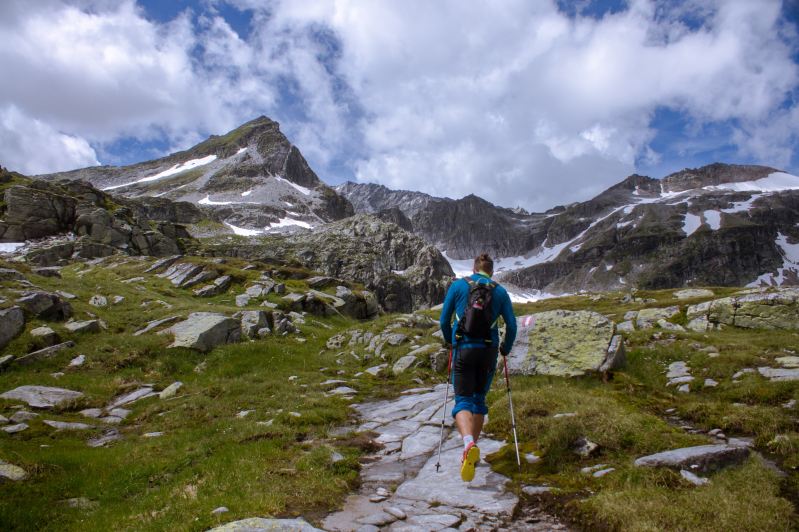
It’s generally recognized among hikers and backpackers that there’s no going back once you transition to using hiking poles. Using trekking poles may not be proven to reduce the strain on your body, but they help you balance on technical sections and help you to maintain posture, and increase your oxygen intake. These same reasons also see members of the ultralight and fastpacking communities using poles to help them cover longer distances more quickly.
While hikers understand that hiking poles positively impact your experience on the trail, many aren’t aware that they come in multiple styles designed for different terrain. Different hiking poles are determined by various factors, including the tip and basket, handles, and how they fold up. Many of the best trekking poles can be adapted to suit a variety of terrain, saving you from having to buy multiple sets, but some sets are more niche for specific environments. Here are the different types of

Telescopic hiking poles
Most hiking poles are telescopic, making them highly adjustable and easy to pack to fit inside your backpack when you don’t need them. These poles have at least 35 cm of adjustment and can be easily altered depending on your footwear stack height or terrain. Historically, telescopic
While telescopic hiking poles may not be as strong or as light as fixed-length poles, they are strong enough for river crossings and to be used to support your tarp shelter. Telescopic

Hiking Z-poles
The lightest hiking poles available may be fixed length, but when it comes to lightweight foldable options, look no further than z-poles. Unlike telescopic poles that fold inside one another, z-poles don’t require excess pole sections and the associated weight. Instead, these
Z-poles lightweight design makes them popular with the fast and light fraternity, though they aren’t quite as strong as telescopic poles and may not be suitable for river crossings and highly technical terrain. However, these poles tend to have limited — if any — adjustability and are, therefore, less versatile. The Black Diamond Trekking Poles Distance Carbon Z are arguably the best z-poles on the market, with the aluminum version a less stiff and expensive option.

Pole tips
Most high-end poles come with adaptable pole tips. Additional ends can be added for varying terrain, and baskets can be changed depending on the ground conditions to help prevent your pole from sinking as you put weight on them. Hikers are often guilty of trekking pole laziness, though, and once their poles are set up will often neglect to change them as the conditions or trail vary. Here’s how you should set your hiking poles up for the trail:
Carbide tips
Most hiking poles are fitted with carbide tips, designed to not only withstand the hardships of the trail but also to dig into the ground and provide a stable position to push from. Carbide tips are best used on dirt, ice, and soft mud but are also used in gravel and even on some technical rocky terrain, where the precision of the narrow tip is preferable to a broader rubber tip.
Carbide tips are noisy, though, and provide no extra shock absorption. On the hard ground and solid trails, you may find that the sound of your tip hitting the floor begins to grate on you after a few hours and that your arms could benefit from a softer end. Carbide tips also leave a noticeable scar on the trail, and you should be aware of this before using them in environmentally sensitive terrain.
Rubber tips
Rubber tips are probably the most commonly used among thru-hikers and those on non-technical terrain. These feet are excellent on hard trails, where the rubber end protects the hiker and stops the carbide tips of your pole from wearing down and needing to be replaced. These soft rubber hiking pole tips won’t grip the ground in the same way as a carbide tip would, but on a solid trail, this won’t be a problem.
Should you lose or break a rubber tip, replacements are inexpensive. Many hikers carry a set of rubber tips for their trekking poles in their bag on all hikes, where they rely on carbide tips. If you hit a road or solid trail, you can slip the tips on and protect yourself and your poles from wear.
Boot tips
Boot tips take the idea of rubber tips one step further and give you a more directional style of pole tip. These boot tips are designed like the underside of a trail runner shoe, with a little rocker to help propel your pole plant forwards and keep you moving efficiently along the trail. Like rubber tips, boot tips are suited to hard surfaces but tend to have a larger surface area and more pronounced tread to offer more grip in various environments.
Mud baskets
In soft dirt, you can easily expend as much energy pulling your poles back out of the trail as propelling yourself forwards. Diving your poles deep into the mud wastes energy, and you risk losing your balance and falling or breaking your poles. Mud baskets screw or clip onto the end of your hiking poles – at the top of the carbide tip section — and act as a barrier preventing your pole from sliding easily into the floor.
Mud baskets are a valuable addition in soft mud and off-trail conditions, but be aware that they can sometimes impede precise pole placement in technical terrain. These mud baskets are also necessary for hiking in soft sand or long grass.
Snow baskets
Snow baskets on hiking poles are similar to mud baskets but tend to be much broader to create a larger surface area. If you’re



